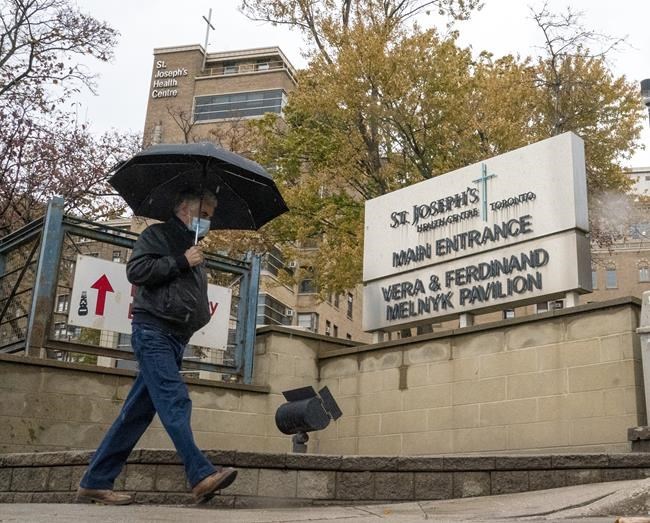OTTAWA — Groups representing thousands of doctors and nurses are asking the federal Liberals to help Canada's strained health-care system in their upcoming budget, flagging concerns about lack of access to family doctors as well as chronic staff shortages.
The Canadian Medical Association estimates about five million Canadians don't have a primary care physician, or family health-care team, which has spillover effects into other parts of the health-care system.
Among those trickle-down effects is people going to emergency departments, already stretched by the COVID-19 pandemic, for issues a family doctor could manage.
For the moment, the Liberals have sent signals there won't be a prescription for primary care in their upcoming budget.
Association president Dr. Ann Collins said the budget should set aside about $1.2 billion over four years, particularly in light of the COVID-19 pandemic.
She said people who contracted the disease — particularly those with lingering symptoms, who are known as COVID long-haulers — might have ongoing health effects that a family doctor could address.
Others have avoided seeing a physician over concerns of catching the novel coronavirus, which Collins said would leave conditions undiagnosed and make treating them that much costlier later on.
"The treatment of acute COVID is front and centre right now, but we know that these issues around access to primary care existed long before the pandemic," said Collins, a family doctor for over 30 years.
"COVID-19 only exacerbated that."
There is a long list of issues facing the Liberals, from the need to improve long-term care for seniors to addressing human resource concerns around health-care workers who have been stretched during the pandemic.
The government also faces a balancing act of continuing to aid the economy while keeping a close eye on spending.
Linda Silas, president of the Canadian Federation of Nurses Unions, said communities have been affected economically, "but we have a health-care system that was stretched to the limit," with workers feeling the strain in terms of their physical and mental health.
She said the budget needs to help increase the number of health-care workers, improve problematic conditions in long-term care facilities and boost health transfers to the provinces as premiers have asked.
But, Silas said, the government needs to put conditions on the spending so provinces can't simply use it as they wish.
This year, the federal government will send about $42 billion to the provinces to cover the costs of their health-care systems under an arrangement that sees the amount rise by at least three per cent annually.
The country's premiers say that formula means transfers don't keep pace with yearly cost increases of about five per cent. They're looking for $28 billion more this year and about $4 billion annually thereafter.
Some of those costs have to do with an aging population, with the oldest of the baby boomer generation turning 75 this year.
Collins said the medical association is also looking for the government to create a seniors care benefit, modelled after the Canada Child Benefit to help anyone caring for a senior defray out-of-pocket expenses.
Putting strings on health transfers is never popular with provinces, but the federal government can designate where investments should go, said former health minister Dr. Jane Philpott. The budget could be a platform to establish national standards for long-term care tied to additional funding, she said.
Philpott added she would be surprised if the budget didn't put money into health research and bio-manufacturing to improve domestic capability to develop and produce vaccines, as well as expand the budget of the Public Health Agency of Canada.
The agency has traditionally drawn a small part of the Health Canada budget, but the pandemic has rapidly expanded spending.
The government previously estimated the agency would spend $641.8 million, but documents show the total is now over $21 billion. The Liberals' most recent spending estimates for the current fiscal year allot a budget of $8.75 billion for the agency.
Philpott, now dean of health sciences at Queen's University in Kingston, Ont., said a stronger Public Health Agency could have made the country more successful at managing the pandemic, limiting the health and economic impacts.
"Public health has always suffered from the fact that people never want to pay the ounce of prevention, and then we end up paying the pound of cure."
This report by The Canadian Press was first published April 8, 2021.
Jordan Press, The Canadian Press



